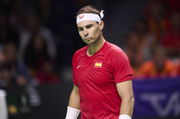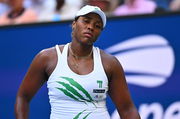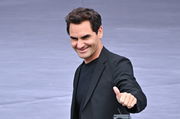
Imago
Image Credits: Imago

Imago
Image Credits: Imago
By claiming a measure of revenge at the Erste Bank Open on Saturday, Alexander Zverev set the stage for another showdown in the Vienna final. In a clash of Top 10 ATP-ranked titans, Zverev overcame Lorenzo Musetti and now faces Jannik Sinner in a rematch of this year’s Australian Open final, where Sinner triumphed in straight sets. “I am looking forward to playing one of the two best players in the world to see where my level really is,” said the German second seed after reaching the final. Now as the top two seeds collide today, the question lingers: how much will Sinner or Zverev pocket after taxes? The stakes are high, the battle intense, and the answer awaits at the final whistle.
Watch What’s Trending Now!
What is the total Prize Money for the 2025 Vienna Open?
The 2025 Erste Bank Open in Vienna, Austria, an ATP 500 event held from October 20–26, shines with a total prize pool of $31.81 million. The singles champion will pocket $5.94 million, while the victorious doubles duo will share $1.95 million, turning triumph into a tangible reward. Every point and every rally carries weight, with stakes higher than ever as the tournament draws the world’s best to the heart of Vienna.
ADVERTISEMENT
Compared to 2024’s prize pool of $29.33 million, this year’s total rises by roughly $2.47, an 8.46% boost. The increase reflects the tournament’s dedication to rewarding excellence, elevating player compensation, and cementing its status as a premier ATP 500 spectacle where talent, prestige, and ambition collide.
How much will the winner, finalist, and other rounds earn in the 2025 Vienna Open?
The 2025 Erste Bank Open in Vienna, Austria, offers an impressive $31.81 million prize pool. The champion will seize $548,000 (500 points), while the runner-up earns $295,000 (330 points). Semi-finalists collect $157,000 (200 points), quarter-finalists $80,000 (100 points), Round of 16 entrants $42,000 (50 points), and first-round competitors $22,000 (0 points). Each step forward not only multiplies the paycheck but also amplifies the ranking points that shape careers and define legacies.
ADVERTISEMENT
| Rounds | Points | Prize Money |
| Winner | 500 | $548,000 |
| Finalist | 330 | $295,000 |
| Semi-finalist | 200 | $157,000 |
| Quarter-finalist | 100 | $80,000 |
| Round of 16 | 50 | $42,000 |
| Round of 32 | 0 | $22,000 |
Top Stories
Rafael Nadal Faces New Injury Blow Only a Year After His Emotional Tennis Exit

Taylor Townsend Makes Unexpected Coaching Call After Career-Defining Success

Roger Federer Sparks Comeback Frenzy After Huge Australian Open Announcement

Andy Roddick’s Sudden Return to the Court Turns Heads 13 Years After Retirement

Coco Gauff’s Vision Pays Off as Two Tennis Influencers Achieve Major Breakthrough

ADVERTISEMENT
How are tennis prize money winnings taxed in general?
Tennis prize money might look glamorous on paper, but the reality behind it is far less simple; it’s heavily taxed before players even get their hands on it. When stars compete at tournaments like the Erste Bank Open in Vienna, their winnings face an immediate withholding tax from the host country. In Austria, this usually falls between 45–50%, depending on residency and treaty agreements, ensuring athletes stay compliant before the money ever reaches their accounts.
But the story doesn’t end there. Once players return home, they often face another tax bill. Their home nations may also tax their international earnings, though many countries offer a foreign tax credit to prevent double taxation. For example, US players must report all global income to the IRS but can offset it with taxes already paid abroad, a balancing act few envy.
This complex web of taxation stretches across the tennis world. At prestigious events like Wimbledon or the French Open, players lose big chunks of their prize to the UK’s and France’s stringent tax laws. That’s why several top names, including Jannik Sinner and Alexander Zverev, choose to reside in Monte Carlo, where zero income tax helps them keep more of their hard-earned millions.
ADVERTISEMENT
How much will Sinner or Zverev take home after taxes at Vienna 2025?
When it comes to the 2025 Erste Bank Open in Vienna, the prize money headlines are big, but what players actually take home is a different story. The singles winner earns $548,000, while the runner-up receives $295,000. Yet, Austria’s high taxation on non-residents, roughly 45–50% at this income level, drastically reduces those totals.
As Winners:
ADVERTISEMENT
| Player Name | Prize Money | Austria Tax | Home Tax | Take Home after Tax |
| Jannik Sinner | $548,000 | ~45-50% | 0% | $301,400 |
| Alexander Zverev | $548,000 | ~45-50% | 0% | $301,400 |
As Runner-up:
| Player Name | Prize Money | Austria Tax | Home Tax | Take Home after Tax |
| Jannik Sinner | $295,000 | ~45-50% | 0% | $162,250 |
| Alexander Zverev | $295,000 | ~45-50% | 0% | $162,250 |
ADVERTISEMENT
These numbers come before more deductions such as agent commissions (10–15%), travel and coaching expenses, and possible home-country taxes. Players who base themselves in tax-friendly nations like Monaco, where there’s no personal income tax, usually keep a larger portion of their earnings. Meanwhile, those living in countries with higher tax rates often see their winnings reduced even further.
In truth, while Sinner or Zverev might seem to walk away with over half a million euros, their real take-home amount shrinks to nearly half once taxes and expenses are settled. The pattern isn’t unique to Vienna; it’s the same story at Wimbledon, the French Open, and beyond, where even multimillion-dollar prize checks are heavily trimmed by local tax systems.
Whether it’s Vienna, London, or Paris, one reality holds steady in tennis: before a champion hoists the trophy, the taxman always takes his cut.
ADVERTISEMENT
ADVERTISEMENT
ADVERTISEMENT
ADVERTISEMENT

